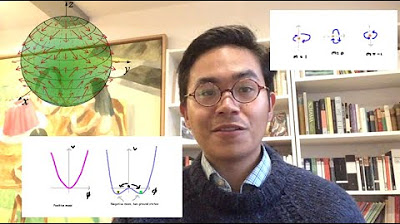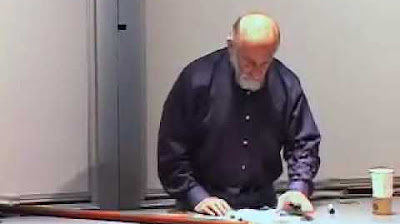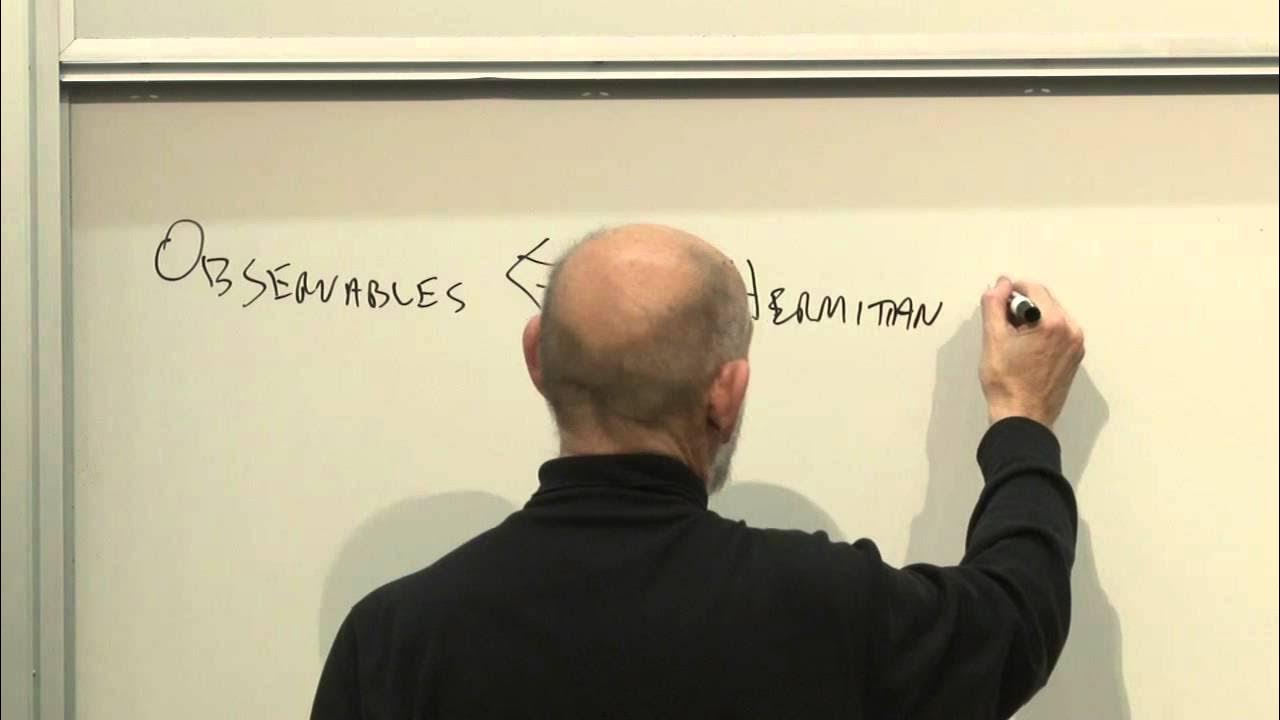Ch 1: Why linear algebra? | Maths of Quantum Mechanics
TLDRThe video script introduces a new series on the mathematics of quantum mechanics, aiming to make the complex subject intuitive and understandable. It highlights the lack of resources for grasping the fundamental math behind quantum concepts and outlines the topics to be covered. The script emphasizes the prerequisites of single variable calculus and linear algebra, inspired by 3blue1brown's 'Essence of Linear Algebra.' It contrasts classical physics, which uses continuous functions, with quantum physics, where physical quantities can be discrete and probabilistic, leading to the conclusion that linear algebra and linear operators are essential for modeling the quantum world.
Takeaways
- 📚 Starting a new series on the Maths of Quantum Mechanics to make the subject intuitive and understandable.
- 🔍 The series aims to transition viewers from knowing about quantum mechanics to having a deep understanding of its mathematical foundations.
- 📈 Assumptions for the series include a working knowledge of single variable calculus, derivatives, integrals, and Taylor series, and familiarity with 3blue1brown's 'Essence of Linear Algebra'.
- 🌟 Classical physics models use continuous functions to represent physical quantities, which are single-valued and continuous.
- 💡 Quantum mechanics challenges classical physics with discrete and probabilistic physical quantities, contradicting the single-valued and continuous nature of classical models.
- 🔬 Experiments with hydrogen atoms show that energy levels are discrete and that the outcome of measurements is probabilistic.
- 🧠 Theoretical approach to model quantum systems involves representing particles as a combination of all possible outcomes before measurement.
- 📊 The mathematical representation of quantum systems suggests using vectors for particles and linear operators (matrices) for physical quantities.
- 🤔 Key questions for future episodes include how particles are represented as vectors, how probabilities are calculated, and how particles evolve over time.
- 🌐 The series will cover these questions and more, aiming to provide a comprehensive understanding of the mathematics behind quantum mechanics.
Q & A
What is the main goal of the series 'Maths of Quantum Mechanics'?
-The main goal of the series is to help viewers transition from knowing quantum mechanics to intuitively understanding quantum mechanics and all the math behind it.
What kind of mathematics is the speaker planning to cover in the series?
-The series plans to cover the fundamental mathematics behind quantum mechanics, including topics that provide intuition for concepts like the wavefunction, quantum superposition, and tunneling.
What mathematical prerequisites does the speaker assume the audience has?
-The speaker assumes the audience has a working knowledge of single variable calculus, including derivatives, integrals, and Taylor series, and is familiar with linear algebra at the level of 3blue1brown’s ‘Essence of Linear Algebra’ series.
How does classical physics model physical quantities?
-In classical physics, physical quantities are modeled using continuous functions because they are single-valued and continuous, changing smoothly over time without sudden jumps.
What are the two key differences between classical and quantum observations of a hydrogen atom?
-In quantum observations, the energy values measured are discrete and not continuous, and the specific energy value measured is random but follows a probability distribution, with some values being more likely than others.
Why can't a continuous function model the quantum world effectively?
-A continuous function cannot model the quantum world effectively because physical quantities in quantum mechanics can be discrete and probabilistic, contradicting the classical assumptions of single-valuedness and continuity.
How does the speaker suggest we mathematically represent the randomness in quantum mechanics?
-The speaker suggests using a linear combination of mathematical objects, each representing a possible outcome, with an associated probability, to model the randomness in quantum mechanics.
What role do linear operators (matrices) play in the quantum mechanics model proposed in the script?
-In the proposed model, linear operators (matrices) are suggested to represent physical quantities because they consist of a discrete set of numbers, which can help extract discrete values as observed in quantum mechanics.
What are 'kets' and 'wavefunctions' in the context of quantum mechanics?
-Kets and wavefunctions are mathematical objects used in quantum mechanics to represent the state of a quantum system. They will be discussed in more detail in the subsequent episodes of the series.
How does the speaker frame the process of developing the framework of quantum mechanics?
-The speaker frames the development of the quantum mechanics framework as a process of deducing from observations and contradictions to classical physics, ultimately leading to the use of linear algebra as a starting point for modeling the quantum world.
What are some of the unanswered questions that will be addressed in the series?
-Some of the unanswered questions include how a particle is represented as a vector, how different probabilities are calculated, and how a particle evolves in time, which will be addressed in the upcoming episodes.
Outlines
🌟 Introduction to the Maths of Quantum Mechanics
The video begins with the creator expressing a gap in available resources for understanding the mathematics behind quantum mechanics. They aim to create a series that demystifies the math and provides intuition for the concepts. The creator lists the topics that will be covered, based on common questions and areas of interest. Before diving into quantum mechanics, the video outlines the mathematical prerequisites, including single variable calculus and linear algebra, as well as the fundamental concepts of classical physics with continuous functions representing physical quantities.
🔬 Classical vs Quantum Observations
This paragraph contrasts the classical physics model with the quantum physics model. It explains how classical physics assumes physical quantities to be single-valued and continuous, using the example of a hydrogen atom's electron releasing energy in a continuous manner. However, quantum physics reveals that these quantities can be discrete and probabilistic, as demonstrated by the experiment with a detector capturing only specific energy values from the hydrogen atom, highlighting the need for a new mathematical model to describe quantum phenomena.
📊 The Role of Linear Algebra in Quantum Mechanics
The creator explains the necessity of linear algebra in modeling the quantum world. They discuss the need for a mathematical representation of the randomness and discreteness observed in quantum experiments. The video introduces the concept of particles being represented by a linear combination of vectors, with each vector representing a possible outcome, and the use of linear operators (matrices) to represent physical quantities. The creator emphasizes that this framework, although developed quickly in the video, was the result of years of work by physicists and serves as a foundation for understanding quantum mechanics.
Mindmap
Keywords
💡Quantum Mechanics
💡Wavefunction
💡Quantum Superposition
💡Tunneling
💡Linear Algebra
💡Calculus
💡Taylor Series
💡Discrete and Continuous
💡Probability
💡Linear Combination
💡Kets and Wavefunctions
Highlights
The speaker introduces a new series on the Maths of Quantum Mechanics aimed at making the mathematics behind quantum mechanics intuitive and understandable.
The series will cover topics that the speaker and the audience may have always wondered about in quantum mechanics.
The audience is assumed to have a working knowledge of single variable calculus, including derivatives, integrals, and Taylor series.
Familiarity with 3blue1brown's 'Essence of Linear Algebra' is recommended for understanding the series.
The series begins with an explanation of why linear algebra is used to model the quantum world.
Classical physics is modeled using continuous functions to represent physical quantities that are single-valued and continuous.
The quantum world exhibits discrete and probabilistic physical quantities, contradicting the classical model.
The experiment with a hydrogen atom shows that energy levels are quantized and the outcome of measurements is random but probabilistic.
A continuous function is not suitable for modeling quantum systems due to the discrete and probabilistic nature of physical quantities.
The speaker proposes that particles in the quantum world can be represented by a linear combination of mathematical objects, each representing a possible outcome.
The concept of a 'dot' operation is introduced as a way to combine mathematical objects representing possible outcomes.
The speaker suggests that physical quantities in quantum mechanics may be represented by linear operators, which are matrices.
The framework of quantum mechanics developed in the video is a simplified version of what took years for physicists to arrive at.
Upcoming episodes will address how particles are represented as vectors, how probabilities are calculated, and how particles evolve in time.
The series aims to transition the audience from knowing quantum mechanics to intuitively understanding it and the math behind it.
The video concludes by emphasizing the importance of linear algebra as a foundation for understanding quantum mechanics.
Transcripts
Browse More Related Video
5.0 / 5 (0 votes)
Thanks for rating:





